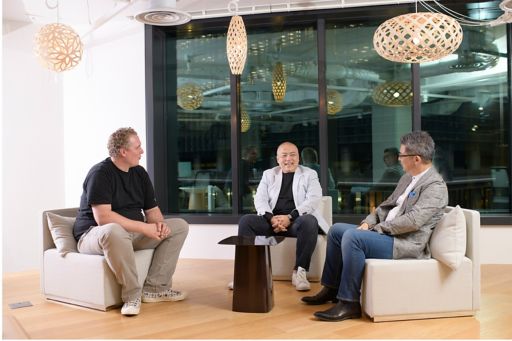In the past few years, Japanese companies have been making continuous challenges to survive in the global market, such as responding to uncertainties generated by the U.S.-China conflict and the rapid evolution of technology, as well as conducting M&A to develop new businesses. Meanwhile, various risks triggered by the COVID-19 crisis are weighing heavily on them as new management challenges. The utilization of data that support management judgements and technologies that can manipulate these data can be considered as one of the issues that should be focused on the most.
At KPMG Ignition Tokyo (KIT), we are always envisioning and fantasizing “how we can integrate the expertise and the latest digital technologies which KPMG Japan has acquired over the years to resolve issues in front of us.” As the “Pilot” of Digital Management, Masayuki Chatani and Tim Denley of KIT discussed the outlook regarding the advisory business for supporting and enhancing the potential of companies, with Tomoyuki Hotta, Executive Officer of KPMG FAS.
Contents
- Process to Find Issues that Lie Deep within Will also Be Borne by Technology
- Needs for Clarification with Data Increasing with Enhancement of Uncertainty
- M&A Cases Are Increasing amidst COVID-19 Crisis but Their Characteristics Are Changing
- What We Provide as Advisory Services Has Changed Greatly
- Data-driven Proposals Make It Easier to Obtain Approvals of Stakeholders
- Time When Stories and Scenarios for M&As Are Created by AI Will Come
Process to Find Issues that Lie Deep within Will also Be Borne by Technology
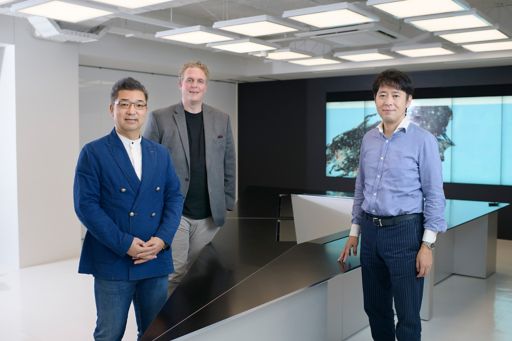
(Masayuki Chatani, Representative Director & CEO of KPMG Ignition Tokyo and CDO of KPMG Japan (left); Tim Denley, Board Member & Partner of KPMG Ignition Tokyo (left back); Tomoyuki Hotta, Executive Officer and Partner of KPMG FAS and Leader of Digital & Data Science Team (right)) *Professional affiliation and official position in the article are at the time of publication.
Chatani: Today, I would like us to talk about the digitalization of the advisory business, which affects the basis of management, such as M&A, business restructuring and corporate rehabilitation. What do you think is the key to DX (Digital Transformation) in this area?
Denley: I think the base of the advisory business is to look deeply at clients, determine the roots of their issues and correct them.
As it is necessary to work closely with clients, there is a strong tendency to assume that “this process can only be done by people.” However, I think this situation will change completely if the processes up to determining the issues can be done by utilizing digital technologies and tools.
Advisory requests used to be made and projects were launched based on close personal relationships and past performance. I think this will become more systematic going forward and this change will bring more business opportunities. However, I think we are still lacking a “system” to respond to this change.
Chatani: Now, let’s talk more in-depth about this with Mr. Hotta, Executive Officer of KPMG FAS, who is offering advisory and research services using digital technologies and data analysis for M&A and corporate crisis response actions.
Needs for Clarification with Data Increasing with Enhancement of Uncertainty
Chatani: As an accounting-advisory firm which offers financial and advisory services, KPMG FAS is assisting companies to resolve various management issues and enhance their corporate value. Is technology incorporated in your operations?
Hotta: My team was organized based on the idea that “we may be able to utilize data analytics knowledge in M&A situations.” In past cases of M&A, we used to look at financial data such as with Excel and there were many areas that depended on individual skills.
Meanwhile, initiatives to make plans based on GPS data, people-flow data and photos of parking areas of large-scale commercial malls, promote cost reduction measures based on invoice data that have not been compiled, and explore whether it is possible to make profits as a model through machine learning are beginning to be utilized mainly by U.S. hedge funds. It is the mission of our team to introduce these advanced data analytics technologies into our M&A advisory services.
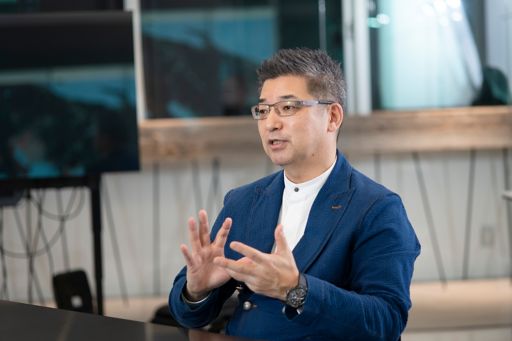
Whatever method we use, we are required to “further increase the value of companies.” As we have to grasp elements such as the internal environment and operations of the company based on facts and make efforts with enhanced precision so that profits can be generated, data science is essential and we must also refine our analytics skills. Against this backdrop, it can be said that “the COVID-19 crisis has created a situation we have never encountered before, bringing everything into the darkness.”
Chatani: You mean that plans that were formulated before COVID-19 can no longer be used and that it is becoming difficult to make annual plans, don’t you? Are there any changes in the needs of your clients?
Hotta: To be honest, there has been no change in the essence of our service to clients yet. We are in a state where we are sticking to our customary method for the time being because our past settings cannot be used any more and we do not know what to base our service on.
Chatani: Is this because it is the first budget reorganization since the outbreak of COVID-19?
Hotta: As the objectives of our clients are M&A and business restructuring, the truth is we cannot think of any concrete solutions yet. There is also the question of whether conventional financial data such as profit and loss statements make sense any more.
As for work that has been launched already, we cannot change the way things have been done until now on our own or do nothing... As for M&A, in particular, situations change from moment to moment unless we take actions. So, I guess, at this point, we are in a state where “we have partially stopped our thinking process but are just moving our feet.”
M&A Cases Are Increasing amidst COVID-19 Crisis but Their Characteristics Are Changing
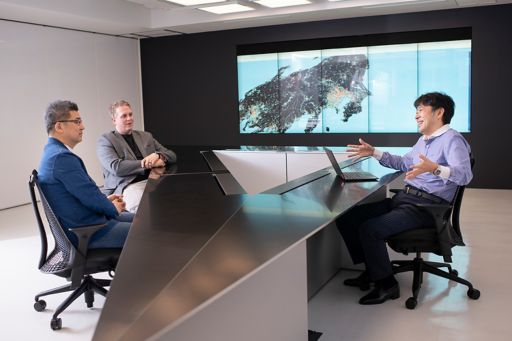
Chatani: In the present situation where business conditions are changing drastically, perhaps M&A will also accelerate as in the case of DX.
Hotta: Absolutely. M&A cases are increasing. The mainstream motivations of M&As that were previously surging in the domestic business environment, which lacks the growth driver considering the demographics in Japan, were based on offensive ideas to “attempt to expand overseas as domestic demand is limited” and “reinforce companies’ positions in sectors where they were previously weak through M&A.” Alternatively, they were based on defensive ideas to restore price negotiation capability in the supply chain through mergers/reorganization and reduce competitors, as profit had declined since competition had become excessive compared to market scale and growth.
However, since the outbreak of COVID-19, M&As involving restructuring of the industry have been accelerating due to the rapid decline in profit in some industries. Meanwhile, regarding offensive M&As, I think there has been an increase in coarse ideas such as “if we’re going to be offensive, we may have a chance in the DX field,” as they don’t know which way they should attack.
Denley: Does this mean that there are many opportunistic companies?
Hotta: I guess you could say so in some respects. If we look into the characteristics of M&As, an increasing number of companies are undergoing regenerative-type M&As or carving out subsidiaries or specific operations to restructure the company. There are cases where we are asked for advice from investors and banks who are providing funds “to seek out measures, as there is no prospect of recovering their investments.”
With the spread of the COVID-19 issue in the financial market, all countries promptly took active monetary easing measures. This has enabled the entire market to secure liquidity itself but questions about where and how to use this capital are beginning to emerge.
Chatani: When implementing regenerative measures, do you talk about utilizing and streamlining data and AI or utilizing them creatively?
Hotta: We have high hopes but when it comes to what to do, this area is still very vague. As DX has become a buzzword now, it seems that many companies are being manipulated. On the one hand, I think that strategic needs such as wanting to concentrate investment more elaborately in areas that are potentially profitable in the future by accessing customer behavior data in retail businesses and therefore wanting to access necessary data with DX are rational. On the other hand, I am concerned that there is the extremely confused economic view that “growth can only be expected in DX-related areas.”
Talking about concerns, areas that are lagging behind and advanced in technologies and operations are mixed in Japan and I am concerned that technologies are introduced in a distorted way that differs from the original vision, with the legacy aspect causing trouble. I am also concerned that their efficiency and effectiveness are being sacrificed.
However, it seems that people on the business frontline are also feeling this. There are moves to work out the differences and advance forward “because it will be impossible to continue (due to COVID-19)” even though strong halation (a blurring effect) may be produced if one chops off the legacy part. This movement that "makes use” of the COVID-19 crisis may be considered as, without mincing words, “a positive aspect generated by the COVID-19 crisis.”
Chatani: You have a point there. For instance, it was believed that “bank buildings should be imposing” in old times but a big change is occurring now as, in extreme cases, banking services can be provided with just one server without the cost of a building.
What We Provide as Advisory Services Has Changed Greatly
Hotta: I said that M&A cases are increasing. In fact, we are starting to receive pressure to lower the prices of our advisory services.
Chatani: What triggered this trend?
Hotta: First of all, in our event-driven cases, we are only asked for consultation when clients are in a situation where M&A or crisis response measures for fraud or scandals become necessary and we start our business from there.
While there are also cases where we make proposals, the recognition that “the proposed project need not be carried out right away” has been increasing due to COVID-19. Meanwhile, as the appetite to invest in DX has not diminished, cases of entering the M&A advisory business at a low cost based on the keyword DX are emerging.
Under such circumstances, the unprecedented added value and proposals provided by KPMG FAS are attracting great attention. There are many investors and stakeholders who believe that “things will not advance further unless we take constructive actions rather than taking negative and defensive ones.” However, as the actual financial position is hard to tell, it will eventually depend on the cost.

Chatani: Do you think that disruptions in M&A-related operations will occur including competitors that make proposals at low costs?
Hotta: We don’t think that it is a disruptive movement triggered only by COVID-19. For example, it has become possible to carry out financial due diligence with several million yen depending on the scale of the case. It is natural that the cost is becoming lower, as understanding of its necessity has spread and experience in implementing it has increased and become common compared to when it first began.
Chatani: If we are to shift to the high-value added line, is there any “technology you wish you had?”
Hotta: As expected, the responses are extremely good when we actually show or demonstrate the outcomes of M&A. We had been explaining the outcomes that are expected after carrying out M&A based on materials but this resulted in dubious responses, where people said, “we don’t have sufficient data that are necessary for analysis and there is no need for analysis in commission businesses in the first place.”
However, when we somehow have them provide data and we show them the breakdown of the areas they were worried about by carrying out a demonstration of the effectiveness measurement, our negotiations start to get underway. If we can actually visualize the results of the analysis and spark their interest, their interest further expands, as they “want to see what happens next!”
There are many management-level personnel on the client side, so I think they are able to take it in even if the information they can obtain is somewhat coarse. As they are always looking at one-size-fits-all analysis such as in economic indicators and news, I think we are able to broaden their interest by reassembling the analysis by highlighting the unique issues faced by a certain company based on the actual data source.
Chatani: It is like a customized medical treatment, which proposes treatment in accordance with the characteristic of each person by getting to know them well. However, a sense of satisfaction or motivation will be necessary for clients to choose it. So, I guess the ability to visualize their issues is extremely important in this sense.
Hotta: For instance, there are various data showing what kind of risks we bear due to COVID-19 but they are only mass information. While macro-economic issues and kinetic changes in society can serve as a reference, they cannot be used for making managerial decisions.
In actual business activities, more granular information will be essential. For example, even if the data source is common, it can be arranged in 100 different colors for 100 different companies by incorporating dimensions and hypotheses such as the positioning and future direction of the company. It can be said that information that comes out of this can be utilized in decision-making and will become a competitive edge.
However, even if we try to explain this, it is difficult to imagine and understand unless the recipients have experience. This is why we need to stimulate their imagination.
Data-driven Proposals Make It Easier to Obtain Approvals of Stakeholders
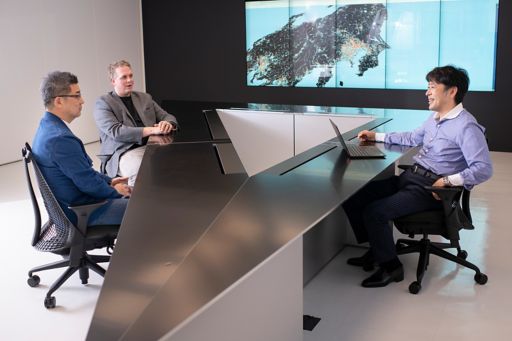
Chatani: I understand that M&A cases are driven by events but are there cases where KPMG FAS takes the initiative in generating events such as proposing a merger between this company and that company?
Hotta: Our Corporate Finance Division provides coordination such as by saying, “your business has this issue. You can respond to this issue from scratch within your company but how about acquiring this company in this industry?” There are also cases where we approach clients with a list of companies that are for sale. In these cases, our chance of success increases further if we have data-driven presentation materials.
This is because the president may not be aware of the need and there are various difficulties to overcome with just the intuition of the president such as providing explanations to stakeholders.
The advantage of data is that they are objective, though this may not necessarily be the case depending on how we handle them. There are stakeholders that can be convinced based on intuition or feelings but there are also those who attach great weight to the objectiveness of data.
However, I think that so far data have only been utilized as a way to justify sensory hypotheses. I’m sure that Chatani-san and Tim-san have never seen downtrend graphs in reports that predict effects. As the recipients already know that “flat movements probably mean downtrend movements,” they tend to be skeptical when they see the attached macro business data.
If we can show them a more elaborate analysis, those that were skeptical about conventional data analyses and graphs in reports will probably change their responses.
Denley: While data analysis has always been necessary as the basis of deal-making business, various expertise will probably be added going forward. However, there may be issues in areas that are junctions, in other words, in the collaboration between data analysis and deal specialists.
Hotta: You’re right. For example, as there is an aspect of science and art being integrated in the area of strategy, people that can find insights and some kind of hypotheses from the analysis will be necessary. At the same time, business-based knowledge will also be indispensable.
Denley: Ordinarily, people that can understand both the business domain and data science will be necessary but they are hard to find. The issues in the future will be to promote either the perspective of “how to create such people” or the method of bringing together professionals from both sides.
Hotta: I used to think that it was decisively more efficient for one person to be able to do both than to divide the work. However, the understanding of those who have acquired knowledge of several fields will naturally be less than those who work on just one field, and as the level of expertise is being highlighted now, there is a limit in one person working on both fields. I think it is necessary to explore ways to connect professionals in the field of technology with professionals in accounting finance.
Denley: That will probably be possible if we take time but as deals advance in a short period of time, time may run out unless we can display high performances from the first day we bring the two professionals together. This is more so because speed has absolute added value in this field.
It may be necessary to collect data in advance or at least to be “familiarized” to be able to provide advice on a weekly basis so that we can respond immediately when we receive requests.
Time When Stories and Scenarios for M&As Are Created by AI Will Come
Denley: Here is the last question for Hotta-san. Do you think that added value can be enhanced if we can quicken the deal cycle?
Hotta: While deals require negotiation time, there are also constraints that we cannot take a long time to make each decision. In this context, the issue will be how much information we can collect to support the decision-making. There are also cases where funds and companies use M&A advisory to fulfill their accountability to explain their M&A decision to stakeholders. I think there is an acknowledgement on the client side to spend money on areas that will serve as added value to them or that are necessary for them to fulfill their obligations.
Denley: This means that it will be good to have many tools that can clearly present information, which can lead to managerial judgements, persuade the clients that “if this is so, this must be done,” and bring out insights that will accelerate the deal.

Chatani: However, analysis alone cannot serve as persuasion material for M&A. This means that it is important to create stories and scenarios.
In recent years, AI has gradually been shifting from language comprehension to language composition and generation. There are movements to feed various texts to open APIs and have them create sentences. For instance, there was a challenge to feed the text of “Batman” and have AI freely create sentences.
By using this technology, it may be possible to create new scenario ideas by feeding AI with various company data and having it create sentences. It may be necessary for people to look at them and decide “this is ok but this is out of the question” in the beginning, as their accuracy will probably be not so high. But they may be able to create ideas regarding corporate alliances which people were not able to come up with.
Hotta: You’re quite right. It may be possible to create a scenario on site by using such technology, which will greatly stimulate the clients that are receiving proposals.
Chatani: I suppose that stories are composed by making additions and subtractions in the heads of professionals but if we can create a business model out of it, I think it will be possible to realize this.
Hotta: This is enticing as an intellectual task. We have been thinking of how we can assemble convincing stories based on decisive data that have been prepared, but if we can assemble stories from an unbiased pure state and evaluate their effectiveness even if it is a prediction, I think the need for this will be quite high.
Follow us on KPMG Ignition Tokyo LinkedIn for the latest news.
Connect with us
- Find office locations kpmg.findOfficeLocations
- kpmg.emailUs
- Social media @ KPMG kpmg.socialMedia




